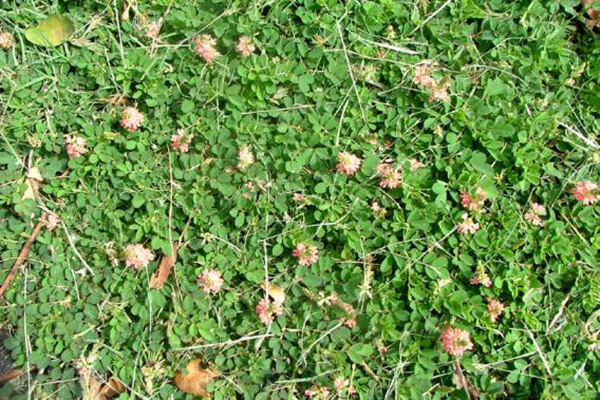
Creeping Indigo
Botanical name: Indigofera spicata
Common Names
Also known as: creeping indigo, indigo, indigo bush, lawn indigo, trailing indigo
Creeping Indigo Description
A short-lived herbaceous plant with creeping or scrambling stems. Its alternately arranged leaves are once-compound with 5-11 leaflets these oblong leaflets (5-25 mm long) have hairless or sparsely hairy upper surfaces and densely hairy undersides. Its small pink or pinkish-orange pea-shaped flowers (4-5 mm long) are arranged in elongated clusters up to 10 cm long its narrow cylindrical pods (15-25 mm long) are borne in a backwards facing position.
STEM AND LEAVES
The stems are slightly flattened, and sparsely hairy (i.e. puberulent). The alternately arranged leaves are once-compound (i.e. pinnate) with 5-11 alternatively arranged leaflets. Their leaflets (5-25 mm long and 4-10 mm wide) are oblong in shape with entire margins. These leaflets are hairless (i.e. glabrous) or sparsely hairy (i.e. puberulent) on the upper surface, while their undersides are densely covered with small close-lying hairs (i.e. appressed pubescent).
FLOWERS AND FRUITS
The small pea-shaped flowers (4-5 mm long) are pink or pinkish-orange in colour. They are arranged in elongated clusters (i.e. spike-like racemes) up to 10 cm long. Each flower has a larger upper petal (i.e. standard), two side petals (i.e. wings) and two lower petals that are fused together and folded (i.e. a keel). The flowers also have ten stamens and an elongated ovary topped with a style and stigma. The fruit are cylindrical pods (15-25 mm long) that turn from green to dark brown in colour as they mature. These fruit are borne in a backwards facing position (i.e. they are deflexed) and are sparsely hairy (i.e. puberulent).
REPRODUCTION AND DISPERSAL
This species reproduces by seed, which are probably dispersed by mowers and in contaminated soil. They may also be spread by water and in mud attached to animals and vehicles.
SIMILAR SPECIES
Creeping indigo (Indigofera spicata) is very similar to the introduced Indigofera circinella and relatively similar to the native hairy indigo (Indigofera hirsuta). These species can be distinguished by the following differences: creeping indigo (Indigofera spicata) has mostly creeping (i.e. prostrate) stems, and its stems and leaves are covered in close-lying hairs (i.e. appressed pubescent). Its cylindrical fruit are straight and borne in a backwards facing position (i.e. they are reflexed) Indigofera circinella has mostly creeping (i.e. prostrate) stems, and its stems and leaves are hairless (i.e. glabrous) or covered in close-lying hairs (i.e. appressed pubescent). Its cylindrical fruit are strongly curved or coiled hairy indigo (Indigofera hirsuta) has spreading or upright (i.e. erect) stems, and its stems and leaves are covered in spreading hairs (i.e. they are hirsute). Its cylindrical fruit are straight and borne in a backwards facing position (i.e. they are reflexed). Creeping indigo (Indigofera spicata) is also similar to Birdsville indigo (Indigofera linnaei) and narrow-leaved indigo (Indigofera linifolia). However, these native species have much smaller pods (less than 7 mm long), and narrow-leaved indigo (Indigofera linifolia) leaves have only a single leaflet.
Reference: https://weeds.brisbane.qld.gov.au/

